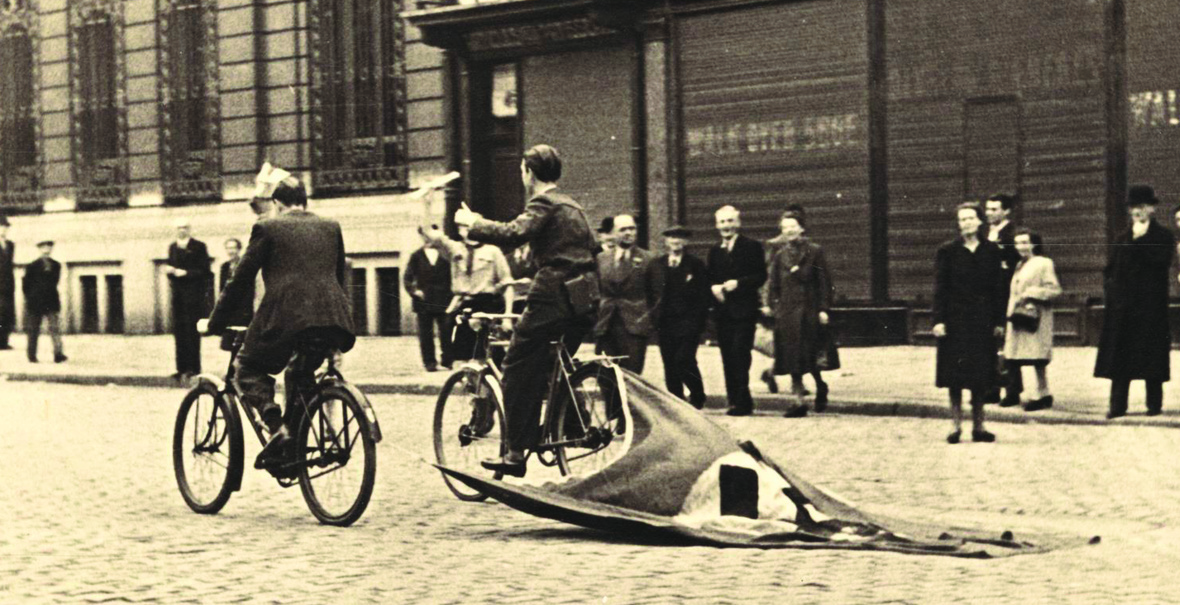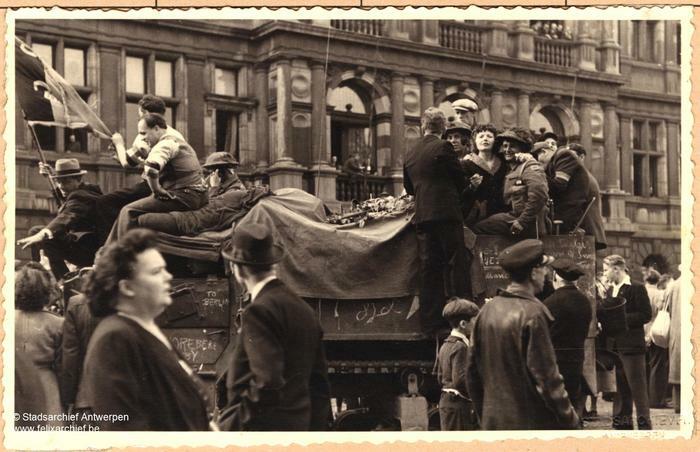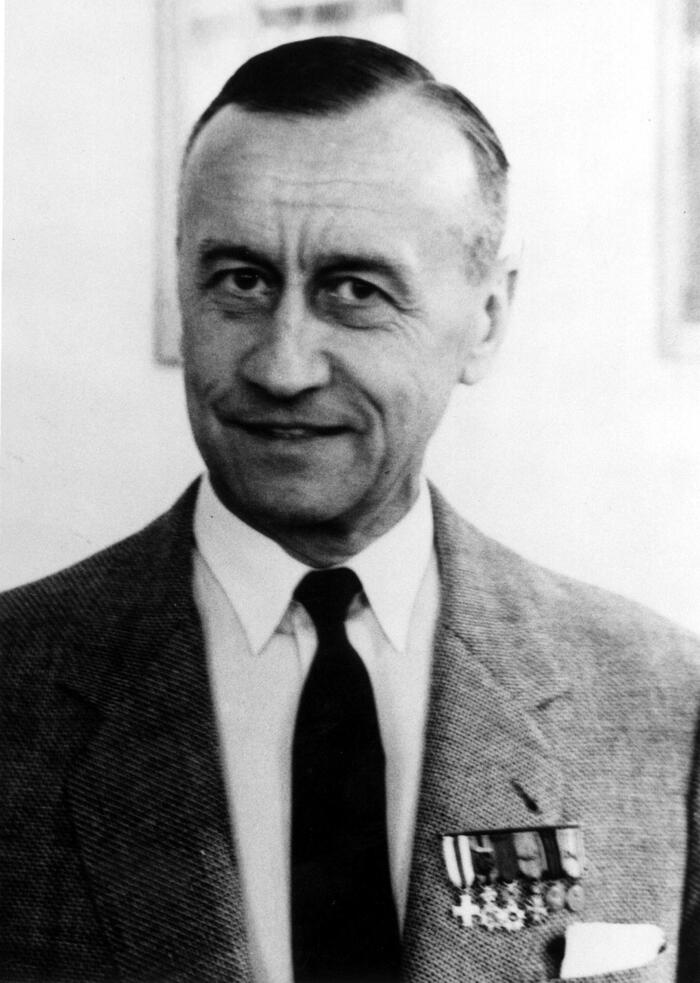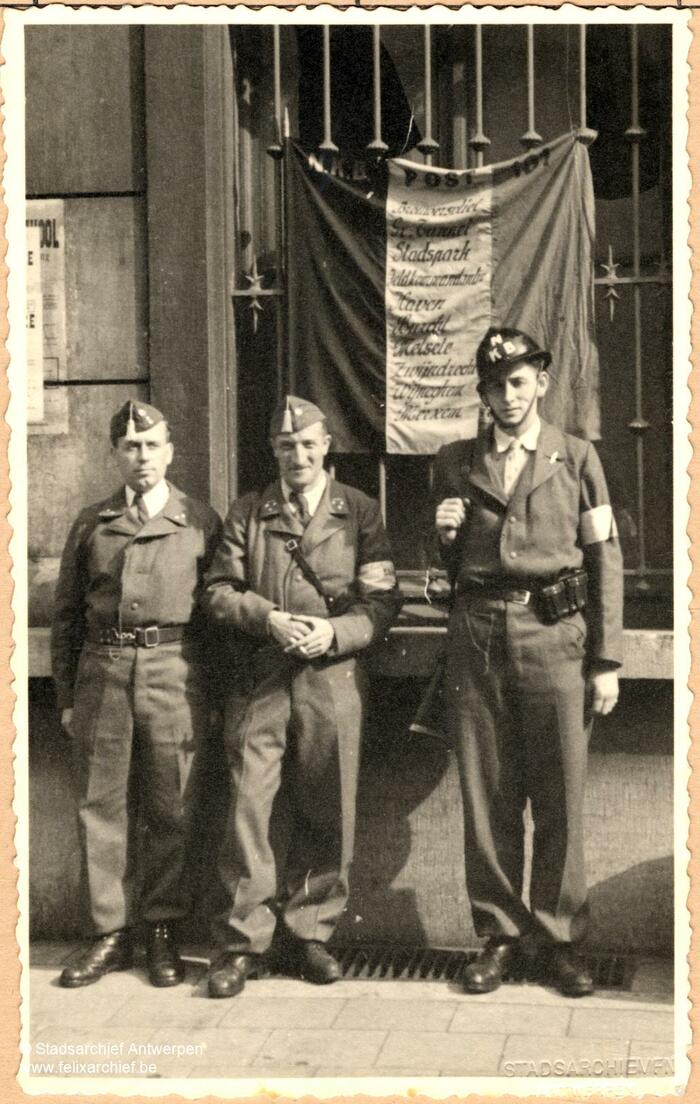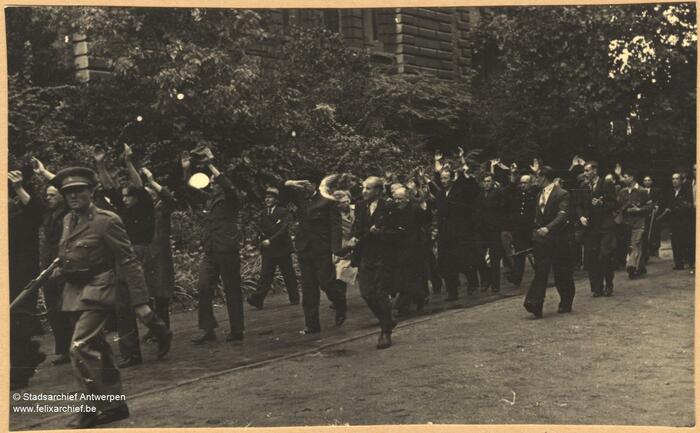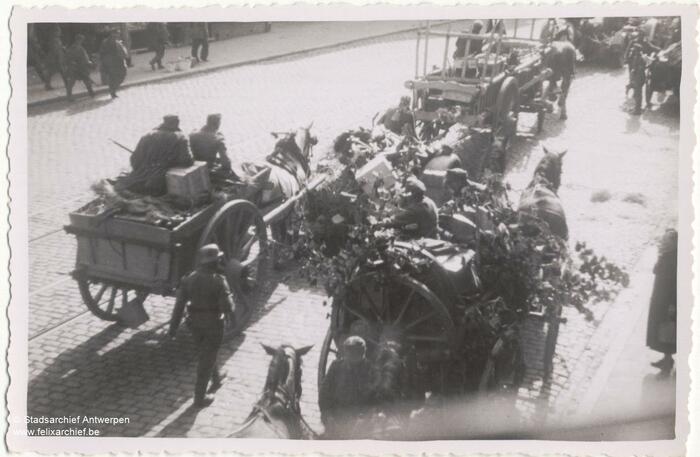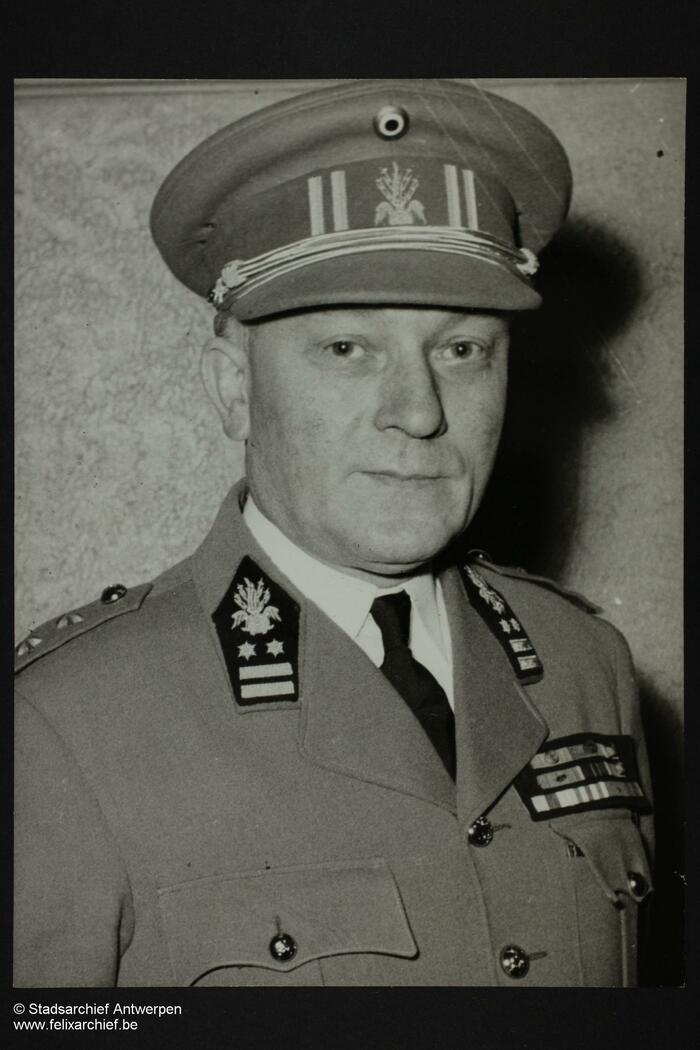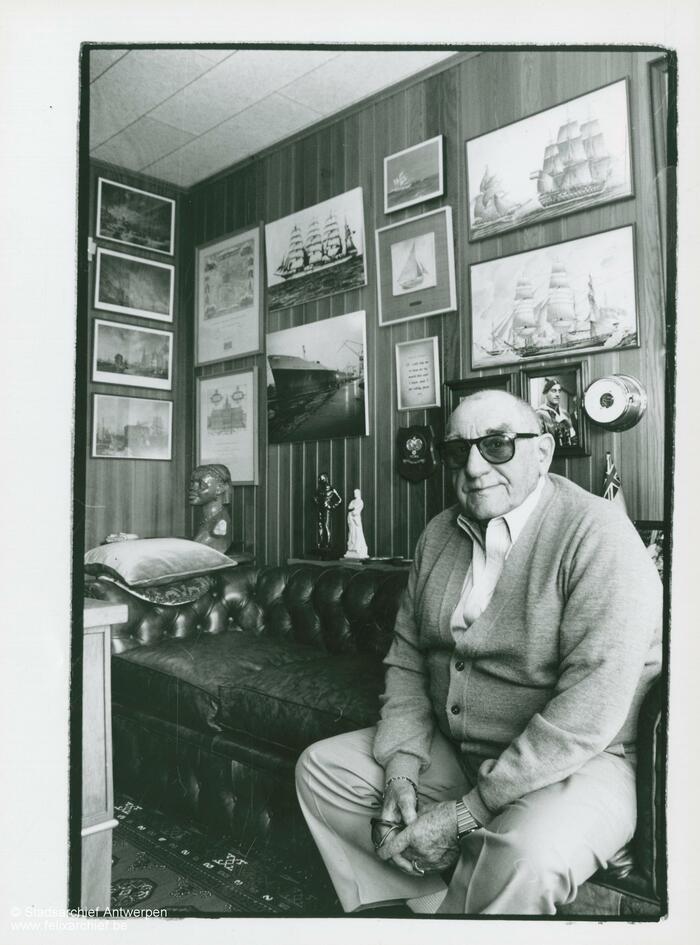On 4 September 1944, the first British tanks rolled into the city of Antwerp. After skirmishes on Meir and in the city’s central park, the British troops soon gained control of the city centre. While an ecstatic crowd took to the streets, the battle continued unabated elsewhere in the city. Soon after, the Allies and the resistance succeeded in jointly preventing any large-scale destruction in the port. This was a turning point. But the battle of Antwerp was far from over. The Germans and the Allies would fight over the Scheldt estuary and the municipalities of Merksem and Ekeren until mid-November. World War II only drew to a close six months later, on 8 May 1945. The few people who did survive the camps only arrived in Antwerp several weeks or months later.
The end of the war: the liberation of Antwerp and its port (for subtitles: click on settings in the video)
The Liberation
After a lot of planning and lengthy discussions, the day had finally come on 6 June 1944: D-Day. The Allied troops launched their invasion from the Normandy beaches, marching towards occupied Belgium. This was an alliance of the Americans, the British and the Canadians, with support from Belgian, French, Dutch, Polish and Norwegian troops. They arrived in the north of France and Belgium relatively quickly. So quickly in fact that the German fortifications and troops in and around Antwerp were ill prepared when the Allies finally arrived.
British tanks
The British received orders to march on Antwerp. The command did not have much information to rely on. Nonetheless they found themselves in front of the gates of the infamous fort at Breendonk on 4 September. This was used as an ‘SS-Auffanglager’ and penal camp of the German police or ‘Sicherheitspolizei/Sicherheitsdienst’ (Sipo-SD) during the war. A total of 165 Antwerpers spent time here before being sent to a concentration or death camp, where they were murdered.
Vekemans’s crucial intervention
The British planned to move on to Antwerp from there and then cross the Willebroek Canal and the River Rupel at Boom. But Robert Vekemans, a former engineer of the pilotage service and an officer of the Belgian army’s engineering decision informed the British tanks that the Germans had laid mines under the majority of the bridges. He convinced them to follow him and helped them safely cross the water over a small bridge. The British troops gained a lot of time as a result. Around lunch, the British tanks arrived at the city gates.
Fighting in the city
The British soldiers successfully fended off the first German defence. That same day, shortly after midday, the tanks rolled into the city via Mechelsesteenweg. A few resistance fighters ran up to the tanks and pointed them in the right direction. One of them was Edouard Pilaet, one of the leaders of the Onafhankelijkheidsfront (OF or Independence Front)”. Despite the preparations in the days running up to these events, even the organised resistance was surprised at the speed of the British advance.
Part of the tanks headed for the Antwerp Feldkommandantur 520 in Meir – the administrative hub of the occupying forces – and the German command in Stadspark, the city’s central park. The remaining tanks made for the port, with the help of the resistance.
The German soldiers in the Feldkommandantur briefly put up a resistance. But to no avail as they were no match for the British weapons. There also was some heavy fighting in and around the bunker in Stadspark. Ultimately General Stolberg, the German commander, decided to surrender along with his men. The British captured just under German prisoners of war as a result.
The fast invasion surprised everyone and everything, including the German soldiers in the city. As a result, the British prevented the planned destruction of the port and tunnels. The ventilation of the pedestrian tunnel and the floating bridge at Steen Castle were destroyed, however.
Scenes of joy in Grote Markt
Photo left: Robert Vekemans - © Collectie CegeSoma/Rijksarchief
Photo right: NKB members demonstrate they took part in the fighting in the city’s central park
A crowd on Antwerp’s streets
During these early days of September, Antwerpers took to the streets to celebrate en masse, as you can see from the many photos of this period. The British tanks were showered with flowers, with people climbing up onto them. The British soldiers received kisses and were embraced. The Belgian flag was everywhere and people felt an overwhelming relief.
And yet… they had to be careful. The Germans were still firing grenades at Deurne and the city centre, from Luchtbal, Ekeren and Merksem. It is estimated that 35 civilians died as a result.
Rage and relief
The departure of the occupying forces did not just give rise to expressions of joy. The early days of September were also a period of great chaos. Some Antwerpers decided to take action themselves. Often this was the outcome of many years of suppressed anger, or as compensation for their suffering during the war years. It is estimated that 50 to 100 people died as a result of these types of actions all over Belgium. In Antwerp, collective actions took place, which involved violence and public humiliation.
The crowd started by targeting buildings and premises that were controlled by the occupying forces or collaborating organisations. The German Reitz uniform factory in Merksem and various halls of collaborating groups such as the Vlaams Nationaal Verbond (VNV) and the Duits-Vlaamse Arbeidsgemeenschap (DeVlag) were destroyed. The neighbours pillaged the warehouses and hangars where the Germans stored their food supplies. The factories and workshops of usurers or anyone who worked for the Germans were also destroyed in the process.
Anyone who was suspected of collaboration was publicly humiliated or punished. Several families saw their possessions thrown out of the windows of their houses onto the street. Homes were tagged with swastikas and detailed accusations or swear words. Some suspects were transferred, under supervision, to police stations, prisons or improved detention centres.
The police rarely had sufficient arms and manpower to take effective action. The role of the resistance in these events is very double. In some cases, the resistance fighters took the initiative. In other cases, they prevented worse things from happening.
Photo left: Some suspects were transferred, under supervision, to police stations, prisons or improved detention centres.
Photo right: The departure of the occupying forces.
During the early days of September 1944, Antwerpers took to the streets en masse to celebrate. ”
The battle for the port in early september 1944
It is no coincidence that the Allies advanced on Antwerp so quickly. The port was their main priority. The resistance groups that operated in and around the port shared their concern, carefully monitoring German activities in the port in the last weeks and months of the summer of 1944. They gathered information and prepared their actions in case of a liberation.
Cat and mouse game in the port
The field knowledge of the resistance proved vital for the British tanks and soldiers. The latter thus succeeded in capturing various strategic locations undamaged, with the help of resistance fighters. They include Bonaparte Lock, Kempisch Dok, Asia Dok, and so on. The capture of Royers Lock and Kruisschans Lock proved more difficult. There the Germans succeeded in damaging the infrastructure. On 5, 6 and 7 September, the battle continued unabated in the port. In spite of the Germans putting up strong resistance, British soldiers and resistance fighters succeeded in capturing strategic locations.
The German troops withdrew behind the Albert Canal, where they set up a new line of defence, with fresh troops to reinforce them. They blew up the bridges over the canal. The Germans continued their targeted attacks on the port area from this position in the following weeks. The damage was limited, however.
The Germans also challenged the Allies to the north of the Albert Canal in Merksem. Here too, several hundred civilians were killed, including 21 employees of the ‘De Schelde’ power plant. They became the victims of German reprisals because the Germans suspected that they were hiding resistance fighters.
The liberation of the port: a successful undertaking?
If anything, today’s historians agreed that the speed with which the Allies were able to capture a large part of the port undamaged during the early days of the Liberation was crucial for the evolution of military events. Not everyone agrees however on whose contribution changed the turn of events.
The role of the resistance was important, but discussions escalated between the various resistance groups. The main organisations (Nationaal Koningsgezinde Beweging (NKB), OF and Geheim Leger) each highlighted their own actions, minimising the contribution of the others. The testimony of the famous NKB leader Eugène Colson (‘Colonel Harry’) became accepted as the standard story after the war. While his contribution was definitely important, his account of the events does not pay sufficient attention to the role of other resistance fighters and organisations.
The collaboration between the Allies and the resistance was vital in Antwerp.
Photo left: Urbain Reniers (Secret Army) coordinates the resistance in the port
Photo right: Eugène Colson (NKB) – Kolonel Harry - later in life
The battle of the Scheldt
No port without the Scheldt estuary
The centre of Antwerp and a large part of the port had been liberated by September 1944 but the Allies needed access to the Scheldt estuary. It was vital to use the port to supply the Allies. The German army command spared no effort to keep control over the Scheldt estuary to prevent them from using the port. German troops hid behind a line of defence along the Scheldt and the Albert Canal. As long as their troops were positioned in Walcheren and Zeeland Flanders, the Allies were prevented from advancing.
The Canadians make their move
While Merksem had been liberated in early October 1944, it would take several weeks before the estuary was also liberated. Ultimately, the Allies, led by the Canadians, expelled the German troops from Zeeland Flanders, Zuid-Beveland and Walcheren. Both sides lost many thousands of soldiers.
Now that the Germans no longer controlled the Scheldt estuary, they could start clearing the Scheldt. It was still unnavigable because of the many mines and other material. Antwerp became fully operational as an allied supply port as late as 28 November 1944.
The Allies use the port
The port was soon bustling with activity. Three days after the first ship entered the port, another 80 called at Antwerp. Food, foodstuffs, weapons and munition were transported to the mainland in the following days and weeks. These were initially dispatched to the Allied troops. Afterwards, aid for the civilian population also started to arrive on a regular basis.
The end of the war?
For many Antwerpers, the liberation of the city on 4 September 1944 was a joyful event. But soon, they realised that the war was far from over. The heavy fighting along the Scheldt estuary and the many flying bombs which the German army command fired on Antwerp made this very clear.
Elsewhere the war continued unabated. The Germans’ last attempt to prevent the Allies from advancing, the Ardennes offensive, failed at the end of January 1945. From this date onwards, there were no German soldiers on Belgian soil. Europe would have to wait another three months for Germany to capitulate on 8 May 1945.
The return of political prisoners, resistance fighters and Jews
In the spring of 1945, the gruesome ramifications of the German repression and persecution in policy became apparent to everyone, in the literal and figurative sense, when a handful of Jews, political and other prisoners, who had survived the camps, returned home to the city. Their wounded and emaciated bodies made a profound impression on everyone. Many did not survive the war and never returned. The war did not end on 8 May 1945 for their families, who spent many years waiting in fear. The lives of many of these people were marked forever more by what they experienced.
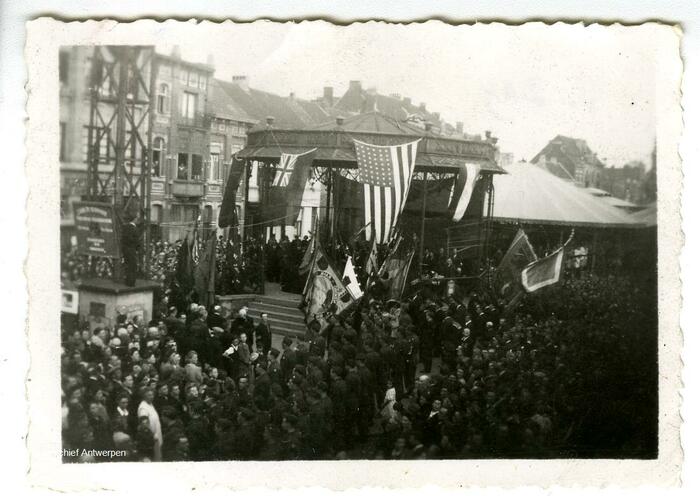
8 May 1945 was a day for celebration in Hoboken.


